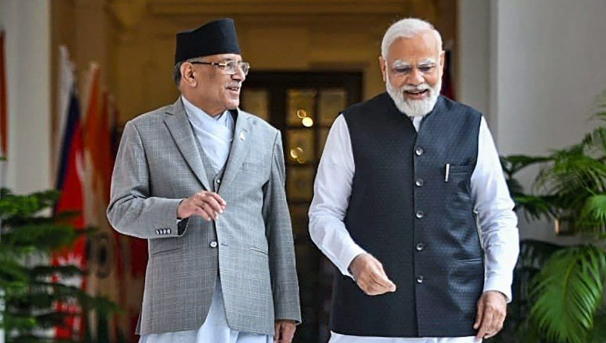Boosting a Special Bond: India-Nepal Relations (GS Paper 2, IR)

Introduction
- Nepal and India share a unique relationship characterized by an open border, shared culture, economic interdependence, and deep-rooted people-to-people connections.
- The leadership of both countries has been actively working to enhance this special bond, fostering closer ties and cooperation.
India's Significance for Nepal
- India plays a crucial role in Nepal's economy and development.
- As Nepal’s largest trading partner, India is the top source of tourists, the sole supplier of petroleum products, and the largest source of foreign investment.
- India also provides vital transit for almost all of Nepal’s third-country trade and accounts for a significant share of inward remittances from pensioners, professionals, and laborers working in India.
- In times of disaster and emergencies, India has always been the first responder, providing immediate rescue and relief, as well as financial aid, such as the $75 million package for earthquake-hit areas in Nepal.
New Initiatives in India-Nepal Relations
- Nepal’s trade deficit with India, close to 18% of GDP, highlights the need for improved infrastructure and reduced transaction costs.
- To address this, Nepal and India are now focusing on reducing the trade deficit, initiating and strengthening cross-border digital financial connectivity to facilitate trade, tourism, and remittance flows.
- These efforts are in addition to enhancing physical connectivity to lower the cost of doing business and strengthen people-to-people ties.
Cooperation in the Power Sector: The Backbone of Economic Cooperation
- The power sector stands as a cornerstone of India-Nepal economic cooperation. Following the 2022 Joint Vision Statement on Power Sector Cooperation, covering bilateral cooperation in the production, transmission, and cross-border trading of hydropower, significant progress has been made.
- In 2023, Nepal exported approximately 650 MW of electricity to India, earning over Rs 10 billion, thus helping to reduce the trade deficit and augment foreign exchange earnings.
- A long-term power trade agreement signed in 2023 aims to export 10,000 MW of electricity from Nepal to India over ten years, boosting investor confidence in Nepal’s hydro sector.
- This has led to new projects by Indian and Nepali investors and significant partnerships in building cross-border transmission lines.
- Additionally, a tripartite agreement between Nepal, India, and Bangladesh has initiated hydroelectricity export from Nepal to Bangladesh, starting with 40 MW in 2025, with plans for substantial increases.
India-Nepal Cooperation in the Digital Space
- In 2023, Nepal and India decided to enhance digital financial connectivity.
- This allows Indian travelers in Nepal to make payments via mobile phones, with Nepali citizens expected to gain similar capabilities soon.
- This facility will enable hassle-free payments for traders, tourists, pilgrims, students, and medical travelers.
- The mobile transfer mechanism, set to operationalize soon, will help workers transfer earnings through formal channels.
- Furthermore, the process for Nepalis to open bank accounts in India is being simplified, alongside straightforward procedures for obtaining Aadhaar cards.
Measures to Reduce the Cost of Cross-Border Trade
- Several measures have been taken in partnership with India to reduce the cost of doing business in Nepal.
- This includes constructing two new petroleum pipelines, one between Siliguri, India, and Jhapa, Nepal, and another between Amlekhgunj and Chitwan.
- Following the success of the Motihari-Amlekhgunj petroleum pipeline, which saved Nepal Rs 1 billion annually in transportation costs, these new projects aim to further reduce costs and prevent losses from pilferage, leakage, and delays.
- Additionally, two new integrated check posts (ICPs) in Bhairahawa and Dodhara-Chandani, funded by India, will facilitate smoother movement of cargo and passenger vehicles.
- Upgraded border roads, operational cross-border freight rail, and several ongoing cross-border road and bridge constructions further enhance connectivity.
- The feasibility study of the Raxaul-Kathmandu railway is complete, and a direct rail service from Ayodhya to Janakpur is under consideration.
Conclusion
- The relationship between Nepal and India is deep, broad, and multifaceted. While there are concerns that need addressing, the recent momentum in partnership and progress should continue.
- Bilateral mechanisms to address areas of cooperation and concerns, including boundary issues, should be activated to keep the relationship robust.
- By maintaining this momentum, both nations can ensure a prosperous and cooperative future.


